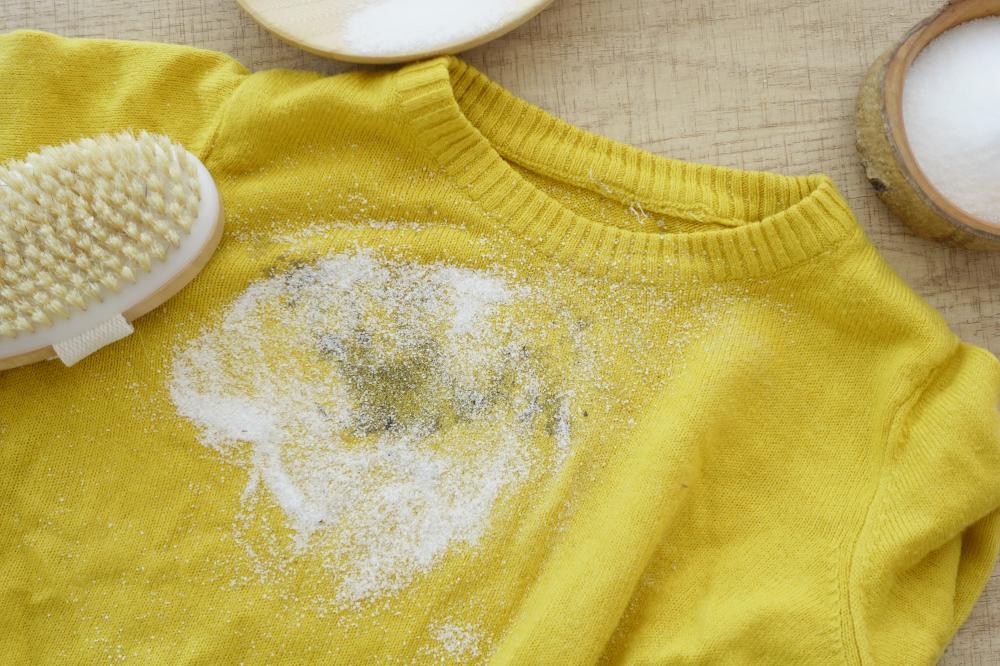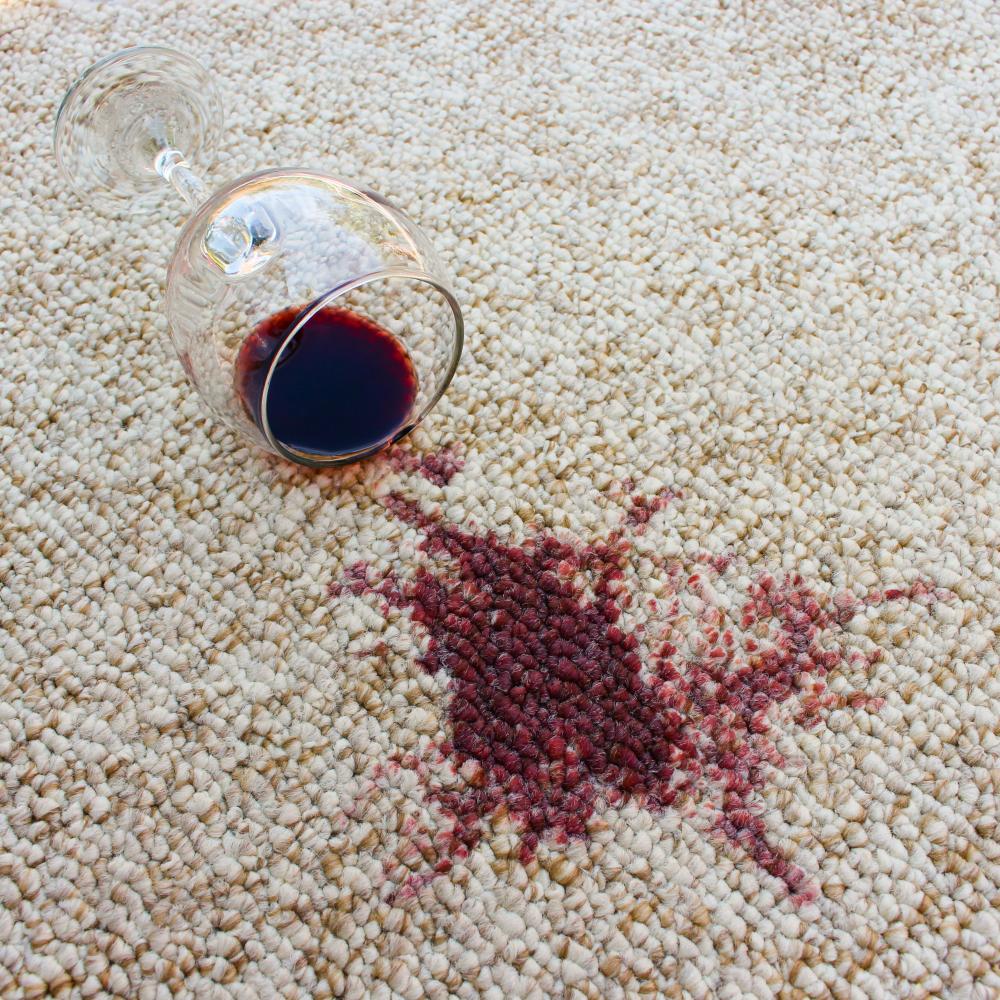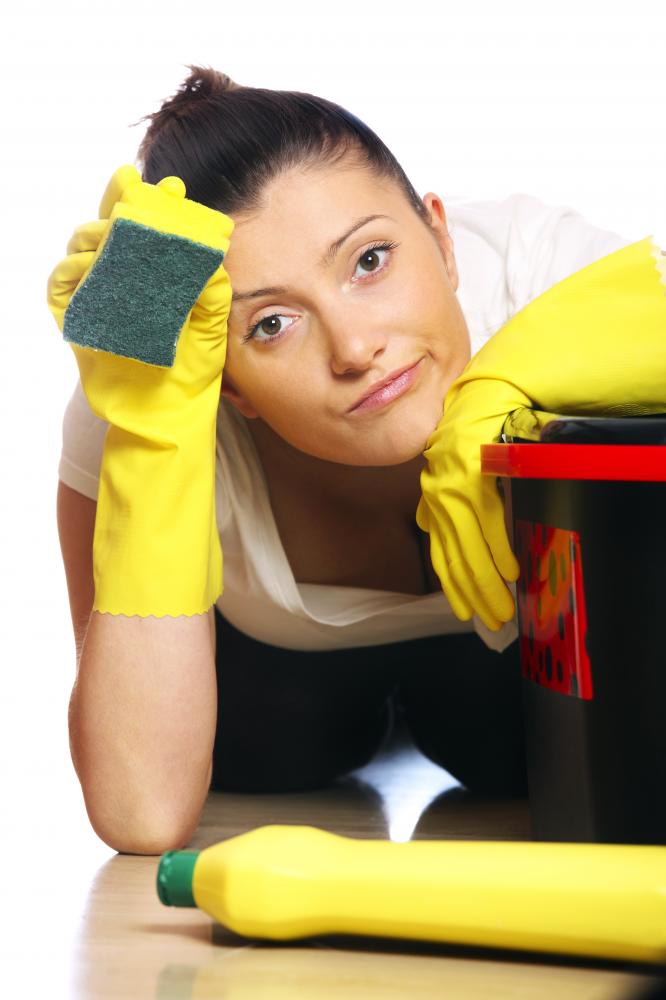
Quick Solutions for Stains on Clothes
We've all had those moments where a spill turns into a stubborn stain. When tackling How to Remove the Toughest Stains From Clothes, Carpets & Furniture, it's important to act fast. Did you know that timing is key? Immediately blotting the stained area with a clean cloth can prevent the stain from setting.
For clothing, using cold water is typically safest, especially for protein-based stains like blood or dairy. Gently dab the stain rather than rubbing it. For an extra touch, consider a pretreatment solution. Apply it directly onto the stain, and let it sit for a few minutes before washing.
To address specific issues like ink stains, consider using rubbing alcohol. Lightly dab the area without oversaturating. It's surprising how effective this can be! For oil-based stains, dish soap often works wonders by breaking down the grease before the clothes go into the wash.
Detailed Carpet Stain Removal Techniques
Tackling carpet stains can be daunting. When discussing How to Remove the Toughest Stains From Clothes, Carpets & Furniture, carpets pose unique challenges. Start by gently blotting the stain with a clean cloth to absorb as much of the liquid as possible.
For homemade solutions, try mixing vinegar and baking soda. The fizzing reaction helps lift embedded dirt. Apply the mixture, let it sit, and then gently blot it out. This technique is remarkable for organic stains like coffee or wine.
Another trusted method involves using hydrogen peroxide for light-colored carpets. Always test in an inconspicuous area first. Mix with water, apply carefully, and observe as it breaks down persistent stains.
Club soda is another fantastic option. Pour a small amount onto the stain and blot with a cloth. This simple ingredient can work wonders for lifting stains and refreshing carpets!
Effective Upholstery Cleaning Strategies
Upholstered furniture adds comfort and elegance to a room, but it can also be prone to stains. Knowing How to Remove the Toughest Stains From Clothes, Carpets & Furniture is vital for maintaining your home's aesthetic.
Begin by gently blotting the stain with water. Then, try mixing a small amount of dish soap with water. Dip a cloth into the mixture and carefully dab the stain. This method is gentle yet effective for most common stains.
For tough, greasy stains, consider sprinkling baking soda on the affected area. Let it sit for a few hours to absorb the grease, then vacuum it up. You'll be amazed at how well this simple step can work!
Insider Tips and Tricks for Stain Removal
From my years in the industry with Fresh Flare Cleaning Services, I've gathered some insights on How to Remove the Toughest Stains From Clothes, Carpets & Furniture. Using high-quality cleaning tools often makes a significant difference. Invest in a reliable carpet cleaner and always keep a spot cleaner on hand for unexpected accidents.
Understanding the nature of the stain is also crucial. Different stains require different approaches. For instance, acid-based stains need neutralizing solutions, while alkaline stains require acidic solutions. Knowing the source helps determine the best course of action.
Additionally, it's beneficial to perform regular maintenance. Frequent vacuuming and occasional deep cleans can prevent dirt build-up, making future cleanups easier and more efficient.
For persistent stains that won't budge, don't hesitate to seek professional help. Their experience and specialized tools can save furniture and carpets from permanent damage.

Understanding Stain Removal
Stain removal techniques vary greatly depending on the type of stain and fabric involved. As a professional cleaning service, we at Fresh Flare Cleaning Services have encountered and tackled countless stains, each with its unique challenges. Over the years, we've refined our approach to address everything from light spills to stubborn, set-in stains.
For most stains, acting swiftly is crucial. The sooner you treat the stain, the better your chances of successful removal. Blotting, rather than rubbing, is often the first step. This technique prevents the stain from spreading or damaging the fabric fibers. For each stain type, understanding the specific properties involved helps tailor the stain removal techniques effectively.
Choosing the right product is just as important. Enzyme-based cleaners work wonders on protein stains like blood, while oil-based stains might require a different approach entirely. Our team always brings a diverse toolkit to every job, ensuring we're ready for whatever challenge arises.
Tackling Oil and Grease
Oil and grease stains are common culprits, especially in kitchens. These stains are notorious for latching onto fabrics and resisting simple wash cycles. When faced with such a stain, we turn to dish soap as a pre-treatment. The detergent breaks down the oils before laundering, allowing for more effective cleaning.
Our experience has shown that heat can set an oil stain. Hence, using cold water initially is wise. When dealing with oil stains on non-washable fabrics, it's often best to consult with professional cleaners. They have access to specialized solvents that can lift oil without damaging delicate textiles.
While these stains can be daunting, patience and the right technique often yield gratifying results. Our team at Fresh Flare never rushes the process, ensuring each garment regains its original luster.
Handling Protein-Based Stains
Protein-based stains, such as blood or food spills, require a unique approach. Using hot water can set these stains, making them nearly impossible to remove. Instead, we soak the fabric in cold water first, followed by pre-treatment with an enzyme cleaner.
The results are typically promising, as enzymes effectively break down the protein components. For stubborn marks, a repeat cycle might be necessary. Patience is key! It's all part of our dedication to providing exceptional cleaning services.
Regular laundering post-treatment is crucial. If the stain remains, more advanced techniques can be explored. This might include soaking in specialized solutions or employing professional-grade equipment.
Confronting Tannin Stains
Tannin stains, like those from coffee or wine, pose their own challenges. Time is of the essence with these stains. We apply white vinegar diluted with water, often a reliable method, to tackle tannin stains without bleach.
Every fabric reacts differently, so we always test a small, hidden area first. If the fabric allows, a mixture of baking soda and water can be particularly effective against tougher stains. With red wine, blotting with a salted cloth immediately prevents deep penetration, buying time for a more thorough cleaning later.
As always, Fresh Flare's priority is preserving the integrity of the fabric while ensuring a comprehensive clean. Our extensive experience enables us to adapt and overcome each situation, guaranteeing satisfaction with our stain removal techniques.
Tips for Removing Tough Stains
Dealing with tough stains is a common challenge in our cleaning service. We've had our fair share of situations where quick thinking and expert techniques were necessary. Whether you're a busy parent, a devoted pet owner, or simply someone who loves hosting dinner parties, stains are inevitable. To make life easier, here are some invaluable tips for removing tough stains from various materials.
Common Household Solutions
One of the most effective tips for removing tough stains involves using materials you likely have at home. White vinegar is a powerful ally against stains. Our team often uses it mixed with water to tackle coffee and tea spills. Let the solution sit on the stain for a few minutes, then blot with a clean cloth.
Baking soda is another excellent option. Its mild abrasive qualities make it ideal for scrubbing away grime without damaging surfaces. Combine it with water to create a paste, and apply it to the stain. Let it sit, then wipe away for a fresh finish. Dish soap can also work wonders, especially on greasy stains. It's gentle yet effective.
Advanced Techniques and Professional Advice
For those particularly stubborn stains, a bit more effort might be necessary. In our experience, enzyme-based cleaners are often the answer. They break down organic stains like blood and grass at a molecular level. Pre-treat the stain with such a cleaner, then wash as usual.
Another tip for removing tough stains is using hydrogen peroxide. This is especially helpful for white fabrics. Test on a hidden area first to ensure it won't cause discoloration. Dab peroxide onto the stain, wait for it to work its magic, then rinse thoroughly.
Stain Removal for Specialty Items
Certain items require special care. For instance, leather furniture can suffer from water stains. Use a gentle leather cleaner or conditioner, buffing it into the stain. Similarly, fine wool garments demand a delicate approach. Blot stains with a damp cloth rather than rubbing. Then, use a wool-safe detergent for washing.
In our line of work, special attention is also given to delicate surfaces like marble countertops. Acidic cleaners can damage these surfaces, so we opt for a mix of mild detergent and water. It’s one of those essential tips for removing tough stains without causing harm.
Never underestimate the power of sunlight. It's an often-overlooked method for removing odors and lightening stains on fabrics. After treating a stained item, laying it in the sun can enhance the cleaning effect.
Preventative Measures and Ongoing Maintenance
Make prevention a priority. Spills can be mitigated by treating surfaces with protectants. For fabrics, applying stain-resistant sprays can reduce the chance of permanent marks. We advise clients to consider these measures, especially in homes with kids or pets.Regular maintenance ensures a cleaner home overall. Swift action can prevent a minor spill from becoming a lasting problem. Always keep a small arsenal of cleaning tools and supplies at arm’s length, ready for when accidents happen.
Lastly, routine professional cleaning can make a significant difference. We often recommend regular deep cleaning sessions to tackle hidden dirt and reinstate a space’s freshness. It's a proactive tip for removing tough stains before they set.

How to Remove the Toughest Stains From Clothes, Carpets & Furniture
How do you get severely stains out of carpet?
Removing severe stains from carpets can be quite a challenge, but with the right techniques, it’s definitely doable. At Fresh Flare Cleaning Services, we’ve handled countless carpet stains during our tenure, and here’s our go-to strategy: First, begin by blotting the stain with a clean cloth. Avoid rubbing, as this can push the stain deeper into the fibers. Next, we often use a mixture of white vinegar and baking soda—this combination creates a fizzing action that helps lift stubborn stains. For particularly tough stains, we sometimes resort to hydrogen peroxide, especially on light-colored carpets. Always test an inconspicuous area first to ensure there’s no color fading. Patience and a gentle touch are key. Feel free to share your toughest carpet stain stories, and we’d be happy to offer tailored advice!
What do professional carpet cleaners use to remove stains?
Professional carpet cleaners, like those at Fresh Flare, have an arsenal of tools and products designed to tackle even the most stubborn stains. We rely on enzyme-based cleaners for organic stains, which break down proteins effectively. For oil-based stains, we use powerful degreasers that can cut through grease without damaging the carpet fibers. Sometimes, steam cleaning is employed, which uses hot water extraction to dislodge dirt and stains from deep within the carpet. Each stain is unique, so understanding its nature is crucial for selecting the right method. We also make sure to educate our clients about the importance of regular vacuuming and care to prevent stains from setting in. Have you ever wondered which stains are the hardest to remove? We’d love to discuss more about it and hear your thoughts!
Are there stains that cannot be removed from carpet?
Unfortunately, there are certain stains that can be nearly impossible to remove completely. Permanent dyes, bleach, and certain inks can alter the carpet fibers too severely for any cleanup method to reverse. The age of the stain also plays a significant role; the longer it’s left untreated, the harder it becomes to remove. However, not all hope is lost. Sometimes, professional cleaning can significantly reduce the visibility of these stains or restore part of the original carpet shade. We always recommend tackling stains as soon as possible and consulting with professionals for the best chance at preserving your carpet. Have you faced any “unremovable” stains? Let us know, and we might have some tips or tricks that could help!
How do you remove really set-in stains?
Removing set-in stains requires a bit of strategy and often a combination of methods. First, loosen the stain by applying a generous amount of stain remover or a mixture of vinegar and water. Let it sit to break down the compounds. For fabrics, enzyme cleaners can be particularly effective, especially for protein-based stains. Applying a paste of baking soda and water can help lift the stain once it's weakened. After treating the area, launder the fabric using the hottest setting safe for the material to maximize effectiveness. Persistence is essential; sometimes, multiple treatments are necessary. Have you ever had a set-in stain that simply wouldn't budge? We’d be interested to know and offer our insights!
What advanced techniques are effective for stain removal?
In the realm of advanced stain removal, enzyme-based cleaners stand out for their ability to tackle organic stains at a molecular level. We also use steam cleaning for carpets, which effectively extracts dirt from deep fibers. For delicate fabrics, professional-grade solvents can safely eliminate oil and grease without damaging the material. Another technique involves UV light, which can be surprisingly effective for certain types of stains, particularly on white fabrics. Our experience has taught us that combining these techniques can yield the best results for stubborn stains. Have you explored advanced methods for stain removal? We’d love to compare notes!
Are there common misconceptions about stain removal techniques?
A common misconception is that scrubbing is the best way to remove a stain; in reality, blotting is preferable to prevent spreading. Another myth is that hot water is always beneficial, but for protein-based stains like blood, cold water is essential to avoid setting the stain. Many also believe that more cleaning solution equates to better results, but oversaturation can actually worsen the stain. We’ve also seen people underestimate the power of household items like baking soda and vinegar, which can be quite effective. What misconceptions have you encountered in your stain-removal journey?
Can household items effectively remove tough stains?
Absolutely, household items can sometimes be the most effective tools in your stain-removal arsenal. For instance, white vinegar, due to its acidity, can break down tannin stains from coffee or tea when mixed with water. Baking soda, with its mild abrasiveness, makes a great paste for lifting tough stains and deodorizing fabric. Dish soap works wonders on greasy stains because it breaks down oil effectively. At Fresh Flare, we frequently use these items in conjunction with professional-grade products for comprehensive stain treatment. Do you have any household remedies you've tried? We'd enjoy hearing what works for you!
How important is timing in stain removal?
Timing is crucial when it comes to stain removal, and it can make a significant difference in the outcome. The sooner you address a stain, the higher your chances of successful removal. Immediate action prevents the stain from setting and becoming a permanent fixture in the fabric or carpet. For example, blotting a spill instantly with a clean cloth can prevent liquids from penetrating deep into fibers. At Fresh Flare, we stress the importance of treating stains quickly to save our clients both time and potential replacement costs. What’s your go-to first response when a spill occurs?
####Resources for Stain Removal Techniques
- Centers for Disease Control and Prevention (CDC) – The CDC provides guidance on various household cleaning and safety practices, including stain removal advice for maintaining a clean and healthy home environment.
- United States Environmental Protection Agency (EPA) – The EPA offers a wealth of information on safe cleaning products and effective stain removal methods, focusing on environmental safety and health.
- eXtension Foundation – As a collaborative network, eXtension provides research-based, practical advice on home maintenance, including effective strategies for stain removal.
- University of California, Los Angeles (UCLA) – UCLA offers educational resources and insights into scientific cleaning techniques, which can be applied to challenging stain removal situations.
- National Geographic Society – This organization provides various educational articles, including those that explain the chemistry behind stain removal and effective cleaning techniques.




